Land Invertebrates
Media

Species Types
Scientific Name
Verrucosa arenata
Description
In late summer and fall, woodland hikers can count on walking into the arrowhead spider's web. These webs are delicate circles that help the spider snare tiny flying insects.
Media

Species Types
Scientific Name
Micrathena spp.
Description
Missouri has three species of spiny orbweavers in genus Micrathena. The webs of these woodland spiders are often run into by hikers!
Media

Species Types
Scientific Name
About 6,500 species have been named so far, worldwide.
Description
Daddy longlegs, or harvestmen, are familiar Missouri animals. They are not spiders, but opilionids. Unlike spiders, they have a fused body form and lack silk and venom glands.
Media

Species Types
Scientific Name
Neriene radiata (formerly Prolinyphia marginata)
Description
The filmy dome spider is one of the most abundant woodland spiders in Missouri. Although the spider is tiny, its snare web, which looks like an upside-down silk bowl, is conspicuous throughout the year.
Media
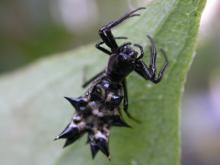
Species Types
Scientific Name
Micrathena gracilis
Description
The color pattern can vary, but the ten-spined, chunky abdomen sets the female spined micrathena apart from all other spiders.
Media
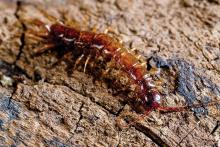
Species Types
Scientific Name
Hundreds of species in North America north of Mexico
Description
Centipedes are familiar to anyone who has overturned rocks and logs, sifted through leaf litter, or dug in the soil. Learn more about Missouri's members of class Chilopoda.
Media
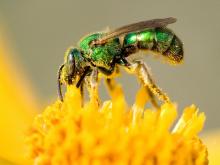
Species Types
Scientific Name
More than 500 species in North America north of Mexico
Description
Missouri has many species of halictid bees, or sweat bees. Some are solitary, but a number show different levels of social behavior. They're named for their attraction to perspiration, which offers them precious moisture and salts.
Media
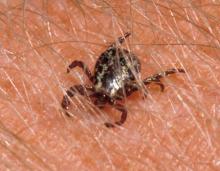
Species Types
Scientific Name
Three common Missouri species
Description
Ticks drink the blood of humans and other mammals. Because they can carry serious, sometimes deadly diseases, it's important to learn about ticks and how to protect yourself from their bites.
Media
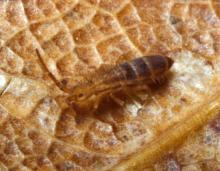
Species Types
Scientific Name
More than 8,000 species globally
Description
Springtails, like insects, have six legs, but these tiny rounded, oval, or elongated creatures that hop quickly into the air are not insects. They have a separate lineage and many structural differences.
Media

Species Types
Scientific Name
Trombicula alfreddugesi and other Trombicula spp. (syn. Eutrombicula)
Description
The worst thing about Missouri summers is chiggers. They are nearly invisible but leave itchy red welts. Avoid their habitat areas, especially after noon.
See Also



Media

Species Types
Scientific Name
Cisseps fulvicollis
Description
The yellow-collared scape moth is more often “orange-collared.” And whether you think it looks more like a firefly or a wasp, it’s still a moth!
Media

Species Types
Scientific Name
Nearly 150 species in North America north of Mexico
Description
Slim, delicate plume moths are instantly recognizable by their T-shaped silhouette, long legs, and muted shades of tan and brown. It can be hard to separate the various species.
Media

Species Types
Scientific Name
Pyrrharctia isabella
Description
Not many people know the adult Isabella tiger moth when they see one, but we’re all acquainted with its caterpillar, the woolly worm, or woolly bear.
About Land Invertebrates in Missouri
Invertebrates are animals without backbones, including earthworms, slugs, snails, and arthropods. Arthropods—invertebrates with “jointed legs” — are a group of invertebrates that includes crayfish, shrimp, millipedes, centipedes, mites, spiders, and insects. There may be as many as 10 million species of insects alive on earth today, and they probably constitute more than 90 percent all animal species.





















